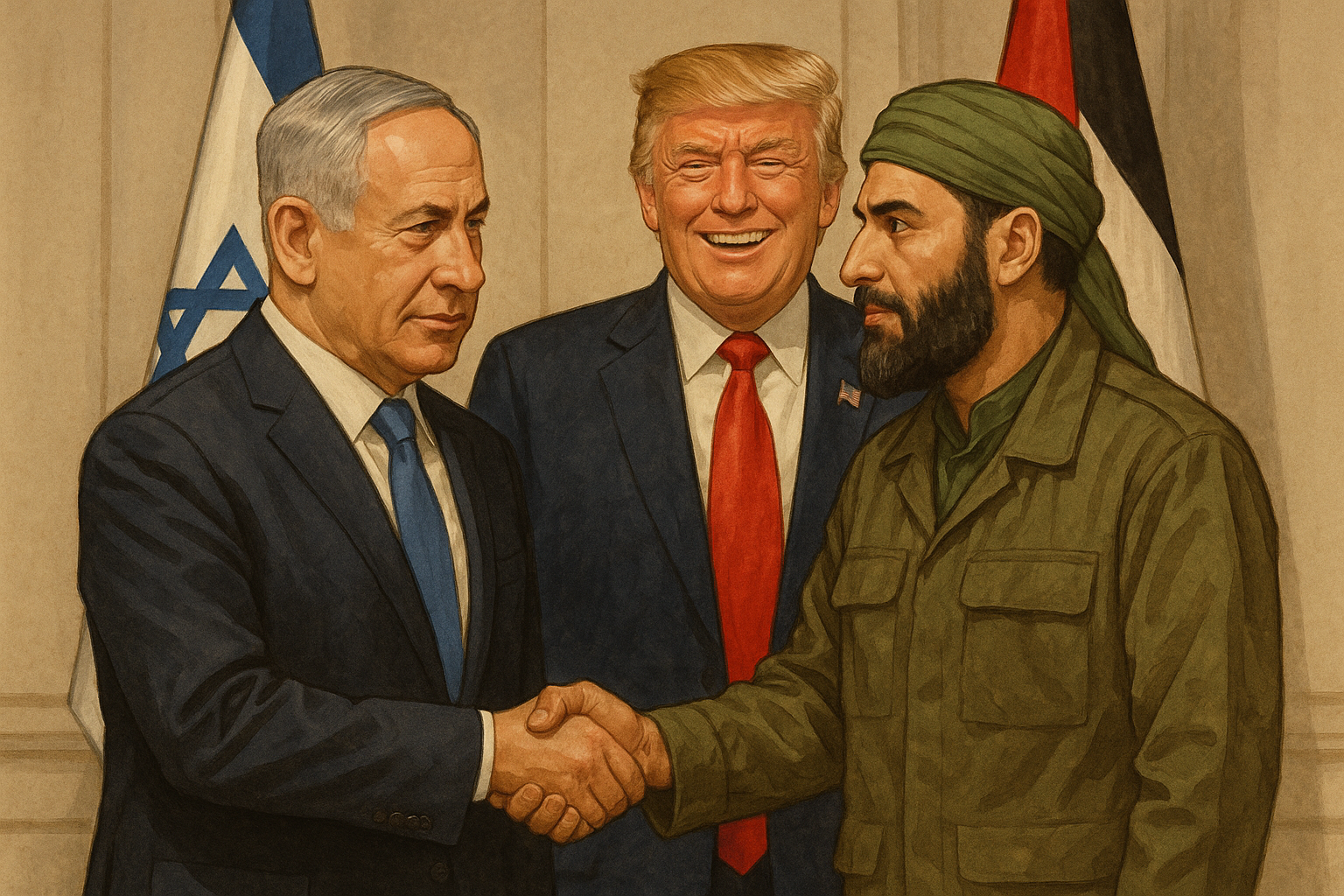Just a few days ahead of this year’s Nobel Peace Prize announcement on Friday (October 10, 2025), US President Donald Trump seems to have made a major breakthrough in the Middle East, by brokering peace between Israel and Hamas, or so he claims to have. The two sides have been battling a bloody conflict for two years now.
In what may go down as one of the most consequential diplomatic moves in recent history, Trump on Thursday (October 9, 2025) announced that Israel and Hamas have agreed to the first phase of a peace plan, a deal that promises a pause in fighting, the release of hostages and prisoners, and the partial withdrawal of Israeli troops from Gaza.
The latest announcement comes less than a fortnight after the US President released a 20-point Gaza peace plan.
Israel-Hamas war: 2 years later, peace finally?
An excited Trump on Truth Social declared that he is proud to announce that Israel and Hamas have both signed off on the first phase of the peace plan. “This means that ALL of the hostages will be released very soon, and Israel will withdraw their troops to an agreed upon line as the first steps toward a Strong, Durable, and Everlasting Peace.”
The announcement followed tense backchannel talks in Cairo, mediated by Qatar, Egypt, and Turkey, which helped bridge months of deadlock between the two bitter enemies. For the first time in two years, the guns may finally fall silent over Gaza’s shattered skyline.
Gaza peace plan phase 1: What does the agreement actually entail?
According to statements from both sides, the deal framed as the “first phase” of Trump’s 21-point peace initiative includes the release of 20 living hostages held in Gaza this weekend and the withdrawal of Israeli forces from 70% of the territory. In exchange, several hundred Palestinian prisoners will be released from Israeli jails.
Sources familiar with the agreement told the Associated Press that deceased hostages will be repatriated in subsequent stages. The finer details of the arrangement, including Hamas’s disarmament and the future governance of Gaza, are expected to be tackled in later rounds of negotiation.
For now, both sides have agreed to a humanitarian pause, opening the way for desperately needed aid convoys to enter Gaza.
How did the Gaza peace deal come together?
The announcement comes after intensive, last-minute diplomacy in Egypt, where negotiators worked to close gaps on key issues. For weeks, mediators from Qatar, Egypt, and Turkey pressed Hamas and Israel to accept Trump’s phased roadmap, which he had unveiled at the White House just a week ago.
The 21-point plan, sources told the news agency, blends immediate humanitarian measures with a longer-term political vision: one that includes demilitarisation, reconstruction, and the creation of a joint security mechanism to prevent future escalations.
Trump, never one to shy away from theatrics, hinted he might travel to Egypt this weekend to personally oversee the implementation of the accord, a move that underscores his bid to reclaim a role as a global peacemaker.
How India and the world responded?
Prime Minister Narendra Modi has welcomed the agreement on the first phase of US President Donald Trump’s peace plan between Israel and Hamas, describing it as a step toward lasting peace in the region. Modi also lauded Israeli Prime Minister Benjamin Netanyahu’s leadership.
“We welcome the agreement on the first phase of President Trump’s peace plan. This is also a reflection of the strong leadership of PM Netanyahu,” PM Narendra Modi said in a post on X. Expressing hope for stability in Gaza, the PM added that the release of hostages and enhanced humanitarian assistance “will bring respite to them and pave the way for lasting peace.”
In Jerusalem, Israeli PM Netanyahu hailed the deal as a “sacred mission of freeing our hostages.” He thanked the US for its “commitment” and said the Israeli cabinet would meet Thursday to give formal approval. “With God’s help, we will bring them all home,” Netanyahu said.
From Gaza, Hamas confirmed its acceptance, calling the outcome the result of “responsible and serious negotiations” based on Trump’s proposal. The group emphasized that Israeli troop withdrawal was a core demand met in this stage of talks.
Meanwhile, Qatar’s foreign ministry spokesperson, Majed al-Ansari, confirmed that Israel and Hamas had indeed reached consensus on the “first phase” of the ceasefire deal. “The agreement will lead to ending the war, the release of Israeli hostages and Palestinian prisoners, and the entry of aid,” he said.
Even UN Secretary-General António Guterres welcomed the development, urging all parties to “abide fully by its terms.”
Israel-Hamas deal: How did Palestinians, Israelis react?
As the announcement rippled across a weary region, celebrations erupted on both sides of the border. In Tel Aviv, the streets filled with tears, cheers, and the sound of champagne corks as hostage families embraced one another after two years of dread. The Hostages Families Forum—a group representing many of those abducted, called the news a moment of “excitement, anticipation, and apprehension.”
Across Gaza, amid ruins and rubble, people fired celebratory gunshots into the night sky and cried in disbelief. For a population that has endured famine, bombardment, and displacement, the word “ceasefire” carried the weight of survival.
Can this fragile truce lead to a lasting peace?
Despite euphoria on the ground, uncertainty looms. Critical questions remain unanswered: Will Hamas agree to disarm? Who will govern Gaza after the war? And can Israel trust a militant group it has fought for decades?
Trump’s proposal envisions future talks addressing these issues, but history is littered with failed truces and fleeting ceasefires. Still, this agreement stands as the first genuine breakthrough in two years of unrelenting violence, a war that began with Hamas’s October 7, 2023 attacks, which killed 1,200 Israelis, and was followed by an Israeli military campaign that has left over 67,000 Palestinians dead and Gaza in ruins.
